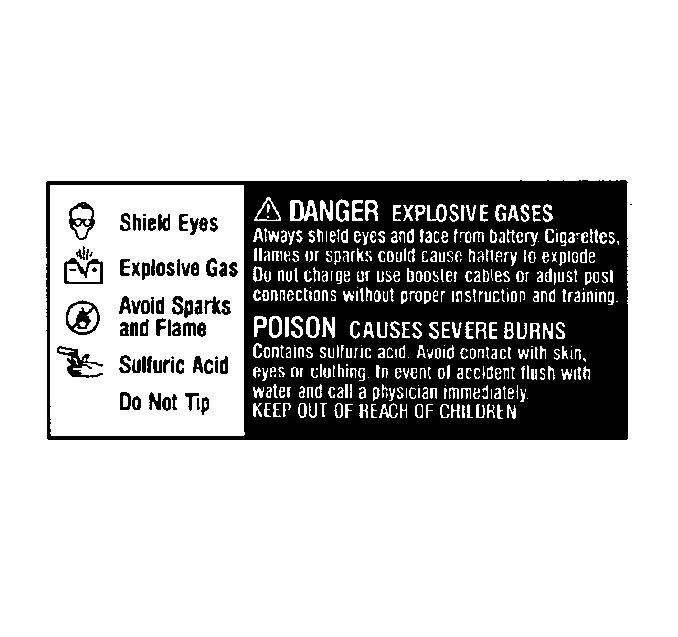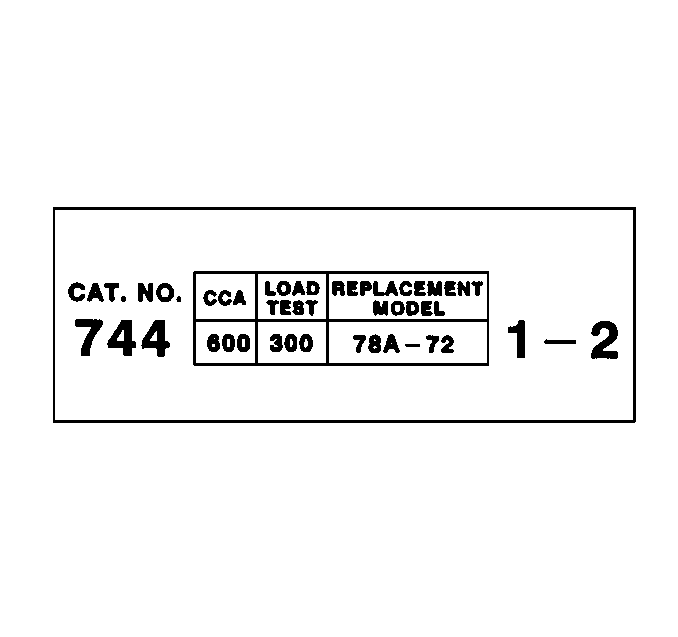Battery
The maintenance-free battery is standard in all applications. There
is one or two batteries equipped on these vehicles depending on the optional
equipment used. The battery is completely sealed except for two small vent
holes mounted on the top of the battery. The vent holes are used to vent
small amounts of gas to escape from the battery. The battery has three functions
in the electrical system.

| • | Provides a source of energy for cranking the engine. |
| • | Acts as a voltage stabilizer for electrical system. |
| • | Provides energy when the electrical load exceeds the output of
the generator (for a limited time). |
The battery specification label contains information in the servicing
of the battery. This information includes test ratings and the recommended
replacement parts.
Reserve Capacity
The reserve capacity is an estimate of how long the vehicle can be driven
with no generator output, the headlamps turned on and a minimum electrical
load (most of the accessories turned off). It is the maximum amount of time
(in minutes) it will take for a fully charged battery, being discharged
at a constant rate of 25 amperes and a constant temperature of 27° C
(80° F), to reach a terminal voltage of 10.5 volts. Other
temperature or current draws, the state of charge, the condition of the
battery, etc., will affect how long the battery will actually last when
the vehicle is being driven without generator output. A battery has two
ratings:

Cold Cranking Amperage
Cold cranking amperage is an indication of the ability of the battery
to crank the engine at cold temperatures. This rating is the minimum amperage
the battery must maintain for 30 seconds at -18° C
(0° F), while maintaining at least 7.2 volts. The actual
performance of a battery will vary with actual temperature.


